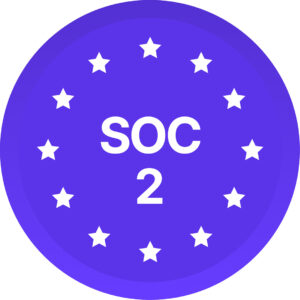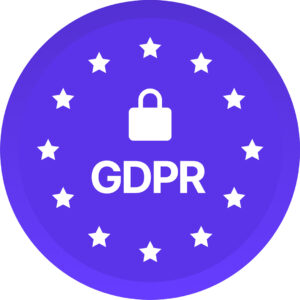Let’s start with a simple but powerful idea: leadership is not a job title. It’s a way of being. A way of seeing. A way of moving through the world with intention, empathy, and courage. Whether you have the corner office, the clipboard, or the quiet wisdom of lived experience, you can be a leader. Because leadership is a behavior, not a business card.
Now more than ever, we need to reimagine what leadership looks like, and more importantly, how it feels for the people on our teams. That means leading with inclusion. And to lead with inclusion, we must first understand the complexity of the humans around us. That’s where intersectionality comes in.
Intersectionality isn’t a buzzword, it’s a lens
Coined by Professor Kimberlé Crenshaw, intersectionality helps us understand how different aspects of a person’s identity, like race, gender, class, ability, sexual orientation, age, and more, don’t exist in silos. They intersect, overlap, and compound in ways that shape people’s lived experiences, especially in systems that weren’t designed with all of us in mind.
For example, a Black woman navigating a predominantly white workplace may face a very different experience from a white woman, or a Black man. A queer employee living with a disability might encounter unique barriers, not just because of one aspect of their identity, but because of the way all those identities intersect in their day-to-day reality.
If leaders don’t take this into account, we risk applying one-size-fits-all strategies that only fit a few. And that’s not just a missed opportunity. It’s a recipe for exclusion.
Inclusive leaders lead with an intersectional lens
So, how do inclusive leaders show up differently?
They start by being curious, not assumptive. They understand that identity is layered and fluid. They know that what’s equitable for one person might not be for another. And they design systems, conversations, and cultures that reflect that complexity.
Let’s break it down into what inclusive leadership through an intersectional lens actually looks like in practice.
1. Self-awareness first, always
Inclusive leadership starts with the mirror. We can’t understand others if we don’t first reflect on our own identities, experiences, and biases. Leaders who embrace intersectionality begin by asking:
- What lenses do I lead through?
- Whose experiences am I centering?
- What perspectives might I be missing?
Formal training programs, such as unconscious bias workshops, intercultural competency training, or inclusive leadership coaching, can help leaders move from intention to action. Tools like the Intercultural Development Inventory (IDI) or DEI-focused 360 assessments can support this growth, but so can humble, ongoing dialogue and feedback.
2. Listening to learn, not to respond
Leaders who lean into intersectionality actively seek out stories from across the organization, not just from the loudest voices or those who mirror their own. They listen deeply to understand how people are experiencing policies, meetings, feedback, and the culture at large.
When employees feel unseen or unheard, engagement suffers. Intersectional leaders ensure that listening isn’t just passive. It’s embedded into the organization’s structure. This means creating feedback loops through employee resource groups (ERGs), affinity groups with real influence, and engagement surveys that go beyond satisfaction to measure belonging. True engagement happens when employees know their perspectives aren’t just acknowledged, but actively shape decision-making.
3. Flexibility over uniformity
Equity doesn’t mean treating everyone the same. It means giving people what they need to thrive, and that takes flexibility.
An intersectional approach to leadership might mean adapting how feedback is delivered based on cultural communication norms. It might mean adjusting workload expectations for someone managing chronic illness. It might mean recognizing that “showing up” looks different for someone navigating safety as a trans employee, or someone caregiving in a multi-generational household.
This isn’t about lowering standards. It’s about shifting the conditions so that everyone has a fair shot at meeting them.
4. Accountability and advocacy
Inclusive leaders don’t just make space. They use their voice to advocate for structural change. That might mean pushing for more inclusive hiring practices, equitable pay audits, or ensuring that policies like parental leave include LGBTQIA2S+ families.
And they hold themselves accountable when harm happens. Because inevitably, even the most inclusive leaders will get it wrong sometimes. What matters is how we own it, learn from it, and do better.
Everyone is a leader
One of the biggest myths about inclusive leadership is that it’s reserved for people with positional power. But when we say “everyone is a leader,” we’re naming the truth that inclusion lives in everyday behaviors, not just strategy decks.
That frontline worker modeling empathy with a colleague who’s struggling? That’s leadership.
That intern who raises a hand and says, “Hey, have we considered accessibility here?” That’s leadership.
That colleague who calls you in with grace when your language unintentionally excludes someone? That’s leadership.
We build inclusive cultures from the ground up and the top down. Everyone has a role. And when we lead through an intersectional lens, we unlock the kind of belonging that drives not just engagement, but innovation, trust, and resilience.
Why it matters: the business and the human case
The research is clear. Diverse teams outperform homogeneous ones, but only when they’re led inclusively. According to a 2023 McKinsey study, companies in the top quartile for ethnic and gender diversity on executive teams were 36% more likely to outperform their peers on profitability.
Beyond driving innovation and profitability, inclusive leadership helps organizations mitigate risk. Many regions are expanding compliance requirements around DEI, workplace equity, and psychological safety. Leaders who fail to account for intersectionality in their policies and decision-making may inadvertently contribute to exclusionary practices, creating legal and reputational risks.
But beyond the numbers, this is about dignity. It’s about co-creating workplaces where no one has to downplay parts of who they are to feel safe, valued, or seen. It’s about recognizing that we all carry different stories, and those stories are not liabilities. They’re leadership assets.
The path forward
Leading through an intersectional lens isn’t a destination. It’s a discipline. It’s choosing to stay curious. To notice whose voices are missing. To ask better questions. To advocate for systems that work for the many, not just the few.
So whether you’re a CEO or a new hire, a community organizer or a project manager, here’s your invitation:
Be the kind of leader who doesn’t just see diversity, but truly values it. Be the kind of leader who doesn’t just talk inclusion, but builds it. Be the kind of leader who leads like it’s a verb.
Because when we lead with intersectionality, we don’t just include more people. We build better teams, stronger organizations, and a world that works better for all of us.
Our newsletter and blogs feature personal opinions and diverse perspectives on diversity and inclusion. While individual articles may not reflect every reader’s view, we value the diversity of opinions and respect our contributors’ insights.

